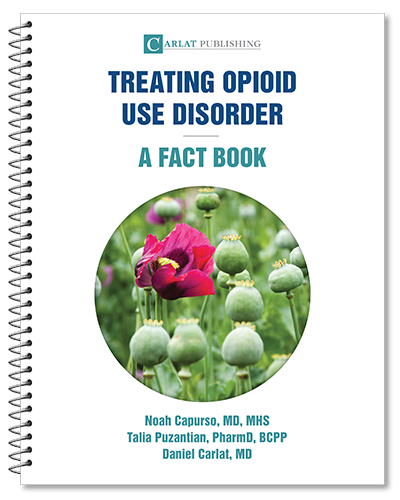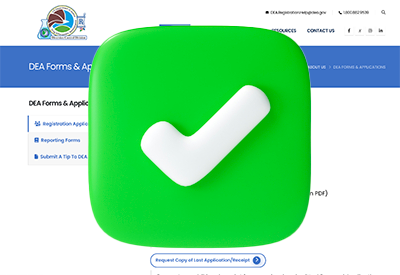Home » Drug Overdoses in the US: Trends and Prevention Strategies
Drug Overdoses in the US: Trends and Prevention Strategies
November 5, 2021
From The Carlat Addiction Treatment Report
 Joshua Sharfstein, MD
Joshua Sharfstein, MD
Professor of the Practice of Health Policy and Management, Johns Hopkins Bloomberg School of Public Health, Baltimore, MD.
Dr. Sharfstein has disclosed no relevant financial or other interests in any commercial companies pertaining to this educational activity.
CATR: Welcome, Dr. Sharfstein. Tell us about your background.
Dr. Sharfstein: I am professor of the Practice of Health Policy and Management at the Johns Hopkins Bloomberg School of Public Health. I’m a pediatrician by training and have worked in the public sector. I was a health policy advisor for Congressman Henry Waxman and the health commissioner of Baltimore. I also was the principal deputy commissioner of the FDA and the health secretary for the state of Maryland.
CATR: How would you categorize the waves of the opioid epidemic?
Dr. Sharfstein: Nationally, we’ve seen three distinct waves. The first began in the late 1990s and was driven by major increases in opioid prescriptions. The second wave was around 2010 when heroin use surged, fueled by cheap heroin and people transitioning to it from prescription opioids. The third wave, which we’re in now and which started around 2013, is characterized by the rise of synthetic opioids, particularly fentanyl, which is very cheap to produce and so highly potent that just the tiniest amount can cause a fatal overdose. In addition, we’ve seen increases in methamphetamine overdoses, which we can consider the potential beginning of a fourth wave in the pandemic of overdose deaths.
CATR: What are some of the demographic trends that characterize this most recent wave?
Dr. Sharfstein: For much of the opioid epidemic, the overdose death rate among white Americans was higher than any other group, but that has been shifting. In the last few years, there has been a surge in overdoses among Black Americans, which I think is reflective of the high level of distress and the harmful impact of drug law enforcement in many of these communities, so you have a double hit. And given the disproportionate impact of the pandemic, it’s possible that we will see overdose mortality among Black Americans exceed that of white Americans in 2020. Again, these changes are really being driven by fentanyl.
CATR: What are some shifts that providers should be aware of when it comes to fentanyl?
Dr. Sharfstein: A couple of years ago, fentanyl was more common on the East Coast. But now we’re seeing it take over the illicit opioid market throughout the country. So in 2021, everyone needs to be vigilant for fentanyl. It’s really a question of whether fentanyl has totally taken over the market for injectable opioids or is in the process of taking over that market. Initially, fentanyl was mixed in with heroin, and overdoses spiked because many people weren’t prepared for the higher potency. But over time, fentanyl has driven heroin out of many drug markets. More recently, fentanyl is being mixed into methamphetamine and cocaine, which is contributing to methamphetamine- and cocaine-related overdose deaths. There are even rare reports of fentanyl getting mixed into cannabis. This is a challenge that is a bit different from other drug challenges of the past. Many people using fentanyl aren’t even aware of it.
CATR: And this is where drug checking comes in.
Dr. Sharfstein: Exactly. The idea behind drug checking is that people who use drugs can protect themselves better if they know what they are taking. It’s consumer protection in the drug market. Surveys show that 90% of people who use drugs say they want to know whether fentanyl is present in what they are consuming (https://americanhealth.jhu.edu/fentanyl). If they know they are consuming fentanyl, they might use less, more slowly, or not at all.
CATR: How is drug checking done?
Dr. Sharfstein: The easiest way for patients to check drugs themselves is with test strips, usually fentanyl test strips, which were developed for urine. But they’re quite accurate when used on drugs dissolved in water.
CATR: How can patients get fentanyl test strips?
Dr. Sharfstein: Many city public health departments will pass them out, as will harm reduction programs. They’re also widely available for purchase online. Providers should be aware, however, that test strips are regulated at the state level and are considered drug paraphernalia in some jurisdictions. In some places, those laws are enforced, but not in others. In some states, like here in Maryland, laws protect the ability to have test strips. I would advise clinicians to talk to their local health department about what’s permitted because drug testing is a powerful harm reduction tool that patients can utilize during this incredible surge in overdoses.
CATR: How does fentanyl use manifest differently compared to prescription opioid analgesics and heroin?
Dr. Sharfstein: First, fentanyl has a very short half-life, so people have to take fentanyl more often to avoid withdrawal: every two to four hours or so. Second, there is a very narrow margin for error. Fentanyl is so highly potent that using just a little bit more than usual can result in a fatal overdose. And the potency can vary widely from batch to batch. Sometimes, it may only be after several overdoses that people realize a particular batch is more potent than others. Also, there seem to be differences when it comes to starting medications for opioid use disorder (OUD), particularly buprenorphine (Editor’s note: see our research update “A New Buprenorphine Dosing Strategy for Easier Induction From Fentanyl”).
CATR: There was a small decrease in overdose deaths in 2018, but those gains were immediately erased in the COVID-19 pandemic. How did that happen?
Dr. Sharfstein: It’s important to note that overdoses started going back up in August 2019, well before the pandemic. But then there was a big acceleration once the pandemic hit for a number of reasons. You can think of three major contributors when it comes to the pandemic and overdose deaths: 1) individual-level factors, 2) environmental factors, and 3) the drugs themselves. COVID-19 caused significant impacts in all three areas. Individuals were experiencing enormous levels of stress, which makes drug use more likely. In terms of the environment, people were isolated and out of work, and many lost loved ones and supporters. In many cases, the pandemic profoundly disrupted treatment access. And in terms of the drugs themselves, COVID-19 actually disrupted the opioid supply for a little while, but this was transient, and when drugs flowed back into the country the market became even more dominated by fentanyl than ever before, as evidenced by overdoses.
CATR: How do we as providers make an impact?
Dr. Sharfstein: It’s helpful to divide providers into three groups. First are the addiction providers. Now that we’re two years into the pandemic, it’s important for people in this group to take a step back in order to learn lessons from the changes that happened within their own treatment system. What worked? What didn’t? For example, many systems began to allow buprenorphine prescribing through telemedicine (Samuels E et al, J Addict Med 2020;14(4):e8–e9). This flexibility, I believe, was a major countervailing force that helped prevent overdose fatalities from increasing even further. The lesson for addiction providers is to hold onto the changes that worked and build on them to create even more accessible effective treatment programs in the future.
CATR: What’s the second group?
Dr. Sharfstein: These are clinicians, including mental health providers, who come into contact with people who use drugs on a regular basis but who are not primarily focused on addiction treatment. For this group, it is essential to integrate addiction care into the clinical environment as much as possible. Many systems of care have an entrenched, artificial divide between mental health and addiction treatment that causes a lot of missed opportunities. Not only does proper addiction treatment save lives, but it makes mental health treatment easier and better. Psychiatrists should get the training to prescribe buprenorphine and know how to refer their patients to addiction specialists if needed. Administrators should ensure that their programs have close working relationships with opioid treatment programs. It is incredibly important for the mental health community to feel a sense of ownership over addiction treatment.
CATR: And the final group?
Dr. Sharfstein: This group contains what might be called “other medical practitioners”: emergency room doctors, hospitalists, and primary care providers. We have evidence that our treatments enormously reduce morbidity and mortality. Yet so many facilities, particularly hospitals, don’t offer these highly effective treatments. Patients can’t access them. That’s a failure of the medical system. Just like general mental health providers, individuals in this “other medical practitioner” group should prescribe buprenorphine for OUD. Unfortunately, far too few doctors, nurse practitioners, and physician assistants are willing or able to do that. In my view, the epidemic of overdose deaths is not entirely dissimilar from COVID-19, where systems have had to adopt whole new sets of policies to provide good care. We are in a crisis of overdose deaths that is taking more than 93,000 lives a year—we all have to think about doing our jobs differently.
CATR: Some providers will say that if they start providing buprenorphine treatment, their practice will become a magnet for people who use drugs. How do you respond to that?
Dr. Sharfstein: My wife is an addiction medicine physician. She and I wrote a book on the opioid epidemic (Olsen Y and Sharfstein JM, The Opioid Epidemic: What Everyone Needs to Know. Oxford University Press; 2019) and we heard this concern frequently. It’s an unfortunate way of seeing things because, in our experience, many providers who start giving real addiction treatment actually end up feeling very satisfied when they can help patients recover control over their lives. It just takes getting over that initial hump of training and certification. But there are legal arguments for providing treatment too. A recent Bloomberg American Health Initiative–funded report from the Legal Action Center pointed out the potential legal liability of hospitals that don’t provide effective addiction treatment in the emergency department (https://americanhealth.jhu.edu/themes/custom/bahi/assets/pdfs/LAC_Report.pdf).
CATR: Can you say a few words about implementing harm reduction techniques?
Dr. Sharfstein: Keeping a harm reduction perspective across treatment settings is crucial. First of all, providers should always meet people where they are. For instance, patients may not be interested in medication for OUD, but they’re interested in fentanyl checking and naloxone that will keep them alive. And then they might be interested in more treatment at the next encounter. Anything that moves people toward health and gives them a greater sense of agency is a step toward recovery and regaining control of their lives. Removing barriers to care is also very important and can be life-saving.
CATR: What sort of barriers to care might providers be able to address in the clinic?
Dr. Sharfstein: For example, it is very common for providers or systems to require that individuals meet a certain standard of behavior before they can get help: requiring group participation as a prerequisite for buprenorphine, for instance. Well, some people might not be able to make weekly group, but they are still worthy of assistance and still have dignity. Other examples include requiring patients to participate in lengthy intake assessments before receiving treatment when they might be in uncomfortable withdrawal, or scheduling intake appointments for dates that are days away. The patient could use drugs while waiting for that appointment and risk overdose. A clinic can tweak these standards relatively easily and have a huge impact. We should be trying to see what’s possible, not erecting arbitrary barriers based on historical practice with little evidence.
CATR: We are also seeing a concerning rise in fatal overdoses from stimulants. What should clinicians know?
Dr. Sharfstein: Well, methamphetamine is the biggest culprit, and its use is more common among younger people. It’s also more prevalent on the West Coast compared to the East Coast, though that might be changing. Most clinicians are aware if methamphetamine is endemic to their area. But unlike opioids, stimulants have much fewer medication options, so in some ways, it can be harder to treat than opioid addiction. One of the most effective techniques is contingency management, but those programs are pretty limited. So severe stimulant use disorder often requires focused and specialized treatments (see CATR May/June 2021 for information on the diagnosis and treatment of stimulant use disorders).
CATR: Thank you for your time, Dr. Sharfstein.
Addiction TreatmentDr. Sharfstein: I am professor of the Practice of Health Policy and Management at the Johns Hopkins Bloomberg School of Public Health. I’m a pediatrician by training and have worked in the public sector. I was a health policy advisor for Congressman Henry Waxman and the health commissioner of Baltimore. I also was the principal deputy commissioner of the FDA and the health secretary for the state of Maryland.
CATR: How would you categorize the waves of the opioid epidemic?
Dr. Sharfstein: Nationally, we’ve seen three distinct waves. The first began in the late 1990s and was driven by major increases in opioid prescriptions. The second wave was around 2010 when heroin use surged, fueled by cheap heroin and people transitioning to it from prescription opioids. The third wave, which we’re in now and which started around 2013, is characterized by the rise of synthetic opioids, particularly fentanyl, which is very cheap to produce and so highly potent that just the tiniest amount can cause a fatal overdose. In addition, we’ve seen increases in methamphetamine overdoses, which we can consider the potential beginning of a fourth wave in the pandemic of overdose deaths.
CATR: What are some of the demographic trends that characterize this most recent wave?
Dr. Sharfstein: For much of the opioid epidemic, the overdose death rate among white Americans was higher than any other group, but that has been shifting. In the last few years, there has been a surge in overdoses among Black Americans, which I think is reflective of the high level of distress and the harmful impact of drug law enforcement in many of these communities, so you have a double hit. And given the disproportionate impact of the pandemic, it’s possible that we will see overdose mortality among Black Americans exceed that of white Americans in 2020. Again, these changes are really being driven by fentanyl.
CATR: What are some shifts that providers should be aware of when it comes to fentanyl?
Dr. Sharfstein: A couple of years ago, fentanyl was more common on the East Coast. But now we’re seeing it take over the illicit opioid market throughout the country. So in 2021, everyone needs to be vigilant for fentanyl. It’s really a question of whether fentanyl has totally taken over the market for injectable opioids or is in the process of taking over that market. Initially, fentanyl was mixed in with heroin, and overdoses spiked because many people weren’t prepared for the higher potency. But over time, fentanyl has driven heroin out of many drug markets. More recently, fentanyl is being mixed into methamphetamine and cocaine, which is contributing to methamphetamine- and cocaine-related overdose deaths. There are even rare reports of fentanyl getting mixed into cannabis. This is a challenge that is a bit different from other drug challenges of the past. Many people using fentanyl aren’t even aware of it.
CATR: And this is where drug checking comes in.
Dr. Sharfstein: Exactly. The idea behind drug checking is that people who use drugs can protect themselves better if they know what they are taking. It’s consumer protection in the drug market. Surveys show that 90% of people who use drugs say they want to know whether fentanyl is present in what they are consuming (https://americanhealth.jhu.edu/fentanyl). If they know they are consuming fentanyl, they might use less, more slowly, or not at all.
CATR: How is drug checking done?
Dr. Sharfstein: The easiest way for patients to check drugs themselves is with test strips, usually fentanyl test strips, which were developed for urine. But they’re quite accurate when used on drugs dissolved in water.
CATR: How can patients get fentanyl test strips?
Dr. Sharfstein: Many city public health departments will pass them out, as will harm reduction programs. They’re also widely available for purchase online. Providers should be aware, however, that test strips are regulated at the state level and are considered drug paraphernalia in some jurisdictions. In some places, those laws are enforced, but not in others. In some states, like here in Maryland, laws protect the ability to have test strips. I would advise clinicians to talk to their local health department about what’s permitted because drug testing is a powerful harm reduction tool that patients can utilize during this incredible surge in overdoses.
CATR: How does fentanyl use manifest differently compared to prescription opioid analgesics and heroin?
Dr. Sharfstein: First, fentanyl has a very short half-life, so people have to take fentanyl more often to avoid withdrawal: every two to four hours or so. Second, there is a very narrow margin for error. Fentanyl is so highly potent that using just a little bit more than usual can result in a fatal overdose. And the potency can vary widely from batch to batch. Sometimes, it may only be after several overdoses that people realize a particular batch is more potent than others. Also, there seem to be differences when it comes to starting medications for opioid use disorder (OUD), particularly buprenorphine (Editor’s note: see our research update “A New Buprenorphine Dosing Strategy for Easier Induction From Fentanyl”).
CATR: There was a small decrease in overdose deaths in 2018, but those gains were immediately erased in the COVID-19 pandemic. How did that happen?
Dr. Sharfstein: It’s important to note that overdoses started going back up in August 2019, well before the pandemic. But then there was a big acceleration once the pandemic hit for a number of reasons. You can think of three major contributors when it comes to the pandemic and overdose deaths: 1) individual-level factors, 2) environmental factors, and 3) the drugs themselves. COVID-19 caused significant impacts in all three areas. Individuals were experiencing enormous levels of stress, which makes drug use more likely. In terms of the environment, people were isolated and out of work, and many lost loved ones and supporters. In many cases, the pandemic profoundly disrupted treatment access. And in terms of the drugs themselves, COVID-19 actually disrupted the opioid supply for a little while, but this was transient, and when drugs flowed back into the country the market became even more dominated by fentanyl than ever before, as evidenced by overdoses.
CATR: How do we as providers make an impact?
Dr. Sharfstein: It’s helpful to divide providers into three groups. First are the addiction providers. Now that we’re two years into the pandemic, it’s important for people in this group to take a step back in order to learn lessons from the changes that happened within their own treatment system. What worked? What didn’t? For example, many systems began to allow buprenorphine prescribing through telemedicine (Samuels E et al, J Addict Med 2020;14(4):e8–e9). This flexibility, I believe, was a major countervailing force that helped prevent overdose fatalities from increasing even further. The lesson for addiction providers is to hold onto the changes that worked and build on them to create even more accessible effective treatment programs in the future.
CATR: What’s the second group?
Dr. Sharfstein: These are clinicians, including mental health providers, who come into contact with people who use drugs on a regular basis but who are not primarily focused on addiction treatment. For this group, it is essential to integrate addiction care into the clinical environment as much as possible. Many systems of care have an entrenched, artificial divide between mental health and addiction treatment that causes a lot of missed opportunities. Not only does proper addiction treatment save lives, but it makes mental health treatment easier and better. Psychiatrists should get the training to prescribe buprenorphine and know how to refer their patients to addiction specialists if needed. Administrators should ensure that their programs have close working relationships with opioid treatment programs. It is incredibly important for the mental health community to feel a sense of ownership over addiction treatment.
CATR: And the final group?
Dr. Sharfstein: This group contains what might be called “other medical practitioners”: emergency room doctors, hospitalists, and primary care providers. We have evidence that our treatments enormously reduce morbidity and mortality. Yet so many facilities, particularly hospitals, don’t offer these highly effective treatments. Patients can’t access them. That’s a failure of the medical system. Just like general mental health providers, individuals in this “other medical practitioner” group should prescribe buprenorphine for OUD. Unfortunately, far too few doctors, nurse practitioners, and physician assistants are willing or able to do that. In my view, the epidemic of overdose deaths is not entirely dissimilar from COVID-19, where systems have had to adopt whole new sets of policies to provide good care. We are in a crisis of overdose deaths that is taking more than 93,000 lives a year—we all have to think about doing our jobs differently.
CATR: Some providers will say that if they start providing buprenorphine treatment, their practice will become a magnet for people who use drugs. How do you respond to that?
Dr. Sharfstein: My wife is an addiction medicine physician. She and I wrote a book on the opioid epidemic (Olsen Y and Sharfstein JM, The Opioid Epidemic: What Everyone Needs to Know. Oxford University Press; 2019) and we heard this concern frequently. It’s an unfortunate way of seeing things because, in our experience, many providers who start giving real addiction treatment actually end up feeling very satisfied when they can help patients recover control over their lives. It just takes getting over that initial hump of training and certification. But there are legal arguments for providing treatment too. A recent Bloomberg American Health Initiative–funded report from the Legal Action Center pointed out the potential legal liability of hospitals that don’t provide effective addiction treatment in the emergency department (https://americanhealth.jhu.edu/themes/custom/bahi/assets/pdfs/LAC_Report.pdf).
CATR: Can you say a few words about implementing harm reduction techniques?
Dr. Sharfstein: Keeping a harm reduction perspective across treatment settings is crucial. First of all, providers should always meet people where they are. For instance, patients may not be interested in medication for OUD, but they’re interested in fentanyl checking and naloxone that will keep them alive. And then they might be interested in more treatment at the next encounter. Anything that moves people toward health and gives them a greater sense of agency is a step toward recovery and regaining control of their lives. Removing barriers to care is also very important and can be life-saving.
CATR: What sort of barriers to care might providers be able to address in the clinic?
Dr. Sharfstein: For example, it is very common for providers or systems to require that individuals meet a certain standard of behavior before they can get help: requiring group participation as a prerequisite for buprenorphine, for instance. Well, some people might not be able to make weekly group, but they are still worthy of assistance and still have dignity. Other examples include requiring patients to participate in lengthy intake assessments before receiving treatment when they might be in uncomfortable withdrawal, or scheduling intake appointments for dates that are days away. The patient could use drugs while waiting for that appointment and risk overdose. A clinic can tweak these standards relatively easily and have a huge impact. We should be trying to see what’s possible, not erecting arbitrary barriers based on historical practice with little evidence.
CATR: We are also seeing a concerning rise in fatal overdoses from stimulants. What should clinicians know?
Dr. Sharfstein: Well, methamphetamine is the biggest culprit, and its use is more common among younger people. It’s also more prevalent on the West Coast compared to the East Coast, though that might be changing. Most clinicians are aware if methamphetamine is endemic to their area. But unlike opioids, stimulants have much fewer medication options, so in some ways, it can be harder to treat than opioid addiction. One of the most effective techniques is contingency management, but those programs are pretty limited. So severe stimulant use disorder often requires focused and specialized treatments (see CATR May/June 2021 for information on the diagnosis and treatment of stimulant use disorders).
CATR: Thank you for your time, Dr. Sharfstein.

Issue Date: November 5, 2021
Table Of Contents
Recommended
Newsletters
Please see our Terms and Conditions, Privacy Policy, Subscription Agreement, Use of Cookies, and Hardware/Software Requirements to view our website.
© 2025 Carlat Publishing, LLC and Affiliates, All Rights Reserved.


_-The-Breakthrough-Antipsychotic-That-Could-Change-Everything.jpg?1729528747)



